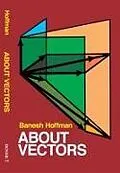Klappentext
Inhalt
1
INTRODUCING VECTORS
1. Defining a vector
2. The parallelogram law
3. Journeys are not vectors
4. Displacements are vectors
5. Why vectors are important
6. The curious incident of the vectorial tribe
7. Some awkward questions
2
ALGEBRAIC NOTATION AND BASIC IDEAS
1. Equality and addition
2. Multiplication by numbers
3. Subtraction
4. Speed and velocity
5. Acceleration
6. Elementary statics in two dimensions
7. Couples
8. The problem of location. Vector fields
3
VECTOR ALGEBRA
1. Components
2. Unit orthogonal triads
3. Position vectors
4. Coordinates
5. Direction cosines
6. Orthogonal projections
7. Projections of areas
4
SCALARS. SCALAR PRODUCTS
1. Units and scalars
2. Scalar products
3. Scalar products and unit orthogonal triads
5
VECTOR PRODUCTS. QUOTIENTS OF VECTORS
1. Areas of parallelograms
2. "Cross products of i, j, and k"
3. "Components of cross products relative to i, j, and k"
4. Triple products
5. Moments
6. Angular displacements
7. Angular velocity
8. Momentum and angular momentum
9. Areas and vectorial addition
10. Vector products in right- and left-handed reference frames
11. Location and cross products
12. Double cross
13. Division of vectors
6
TENSORS
1. How components of vectors transform
2. The index notation
3. The new concept of a vector
4. Tensors
5. Scalars. Contraction
6. Visualizing tensors
7. Symmetry and antisymmetry. Cross products
8. Magnitudes. The metrical tensor
9. Scalar products
10. What then is a vector?
INDEX
